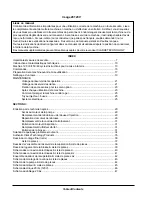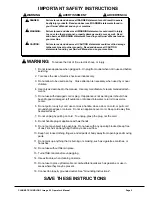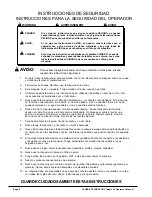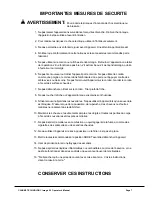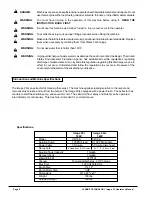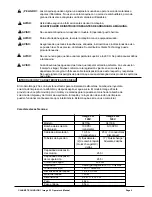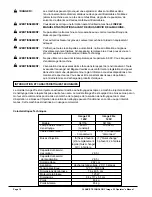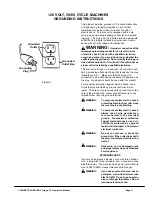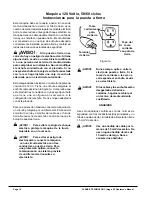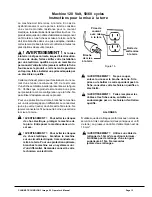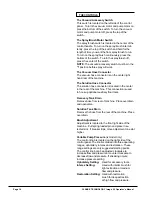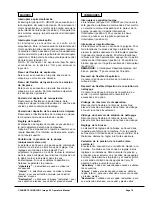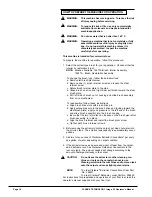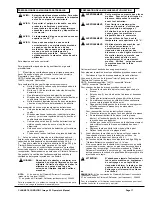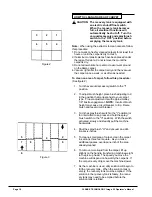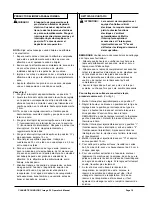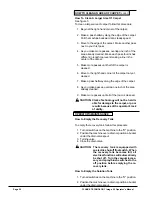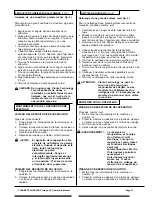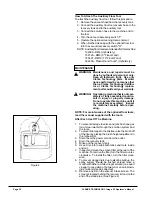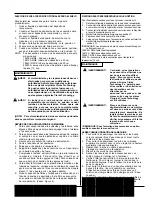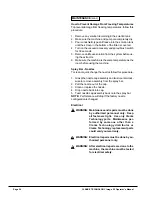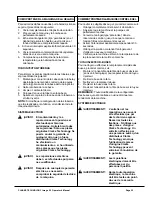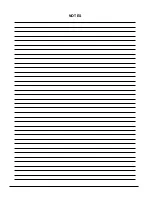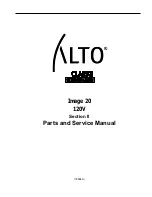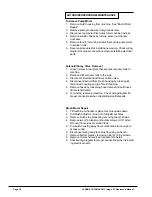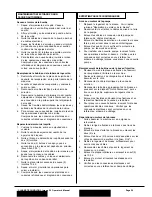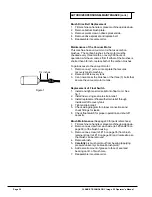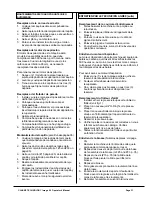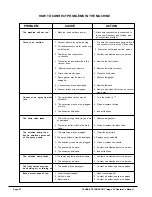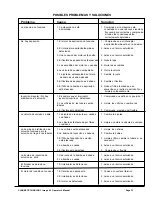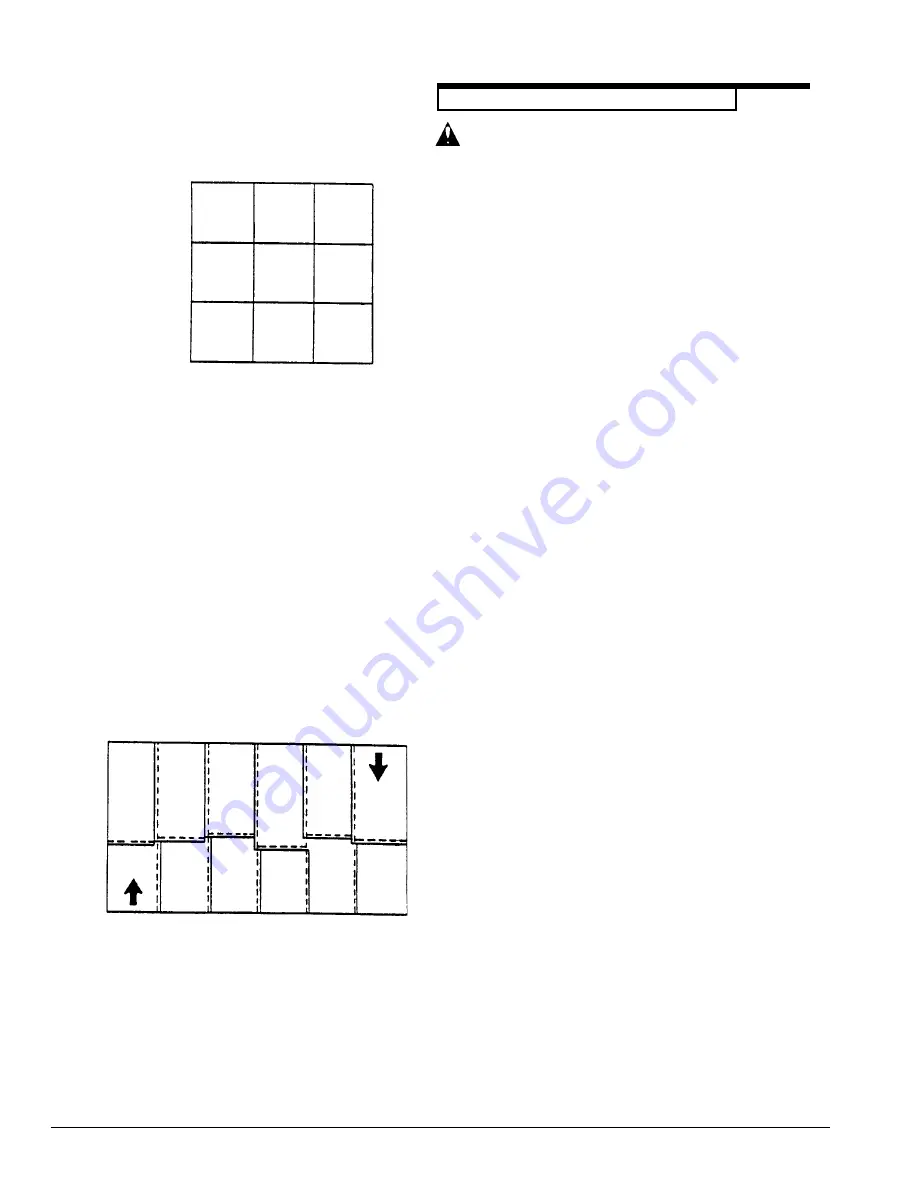
Page 18
CLARKE TECHNOLOGY Image 20 Operator's Manual
Figure 2
Figure 3
3 2 1
6 5 4
5
7
8
6
4
2
9
HOW TO CLEAN AN AREA OF CARPET
CAUTION: The recovery tank is equipped with
an electric shut-off float switch.
When the recovery tank becomes
full, all electrical functions will
automatically be shut off. Turn the
vacuum/accessory and spray/brush
switch to the "OFF" position before
emptying the recovery tank.
Note:
When using the extractor to clean carpets, follow
this procedure:
1.Do not walk on freshly cleaned carpets for at least four
hours or until the carpet is dry to touch.
2.If aluminum or plastic pieces have been placed under
the legs of furniture, do not remove them until the
carpet is dry.
3.Do not allow children or pets to crawl or walk around
on the damp carpet.
4.Vacuum right after the carpet is dry and then vacuum
the carpet once a week, or as often as needed.
To clean an area of carpet, follow this procedure:
(See figure 2)
1.
Turn the vacuum/accessory/switch to the "I"
position.
2.
To adjust brush height, place brush adjusting rod
in the position that corresponds to your carpet
type. Proper adjustment is with approximatley
1/8" bristle engagement.
NOTE:
Incorrect brush
height may cause circuit breaker to trip. Raise
brush and reset circuit breaker.
3.
Turn the spray/brush switch to the "I" position (or
for intermittent use, press and hold the spray/
brush switch to the "II" position). With the switch
activated, slowly and steadily pull the machine
backwards.
4.
Shut the spray/brush "O" and vacuum an addi-
tional six inches.
5.
To clean a small area of carpet, clean the carpet
in sections three feet square. As you make
additional passes, overlap one inch of the area
already cleaned.
6.
To remove more liquid from the carpet, lift up
slightly on the handle, transferring machine weight
to the pick up head. The speed you move the
machine will depend on how dirty the carpet is. If
the carpet is very dirty, move the machine slower.
7.
As the machine is used, dirty solution will begin to
fill the recovery tank. When the solution tank is
empty, the recovery tank must be emptied. If the
solution in the recovery tank is foamy, the recov-
ery tank may need to be emptied before the
solution tank is refilled.

